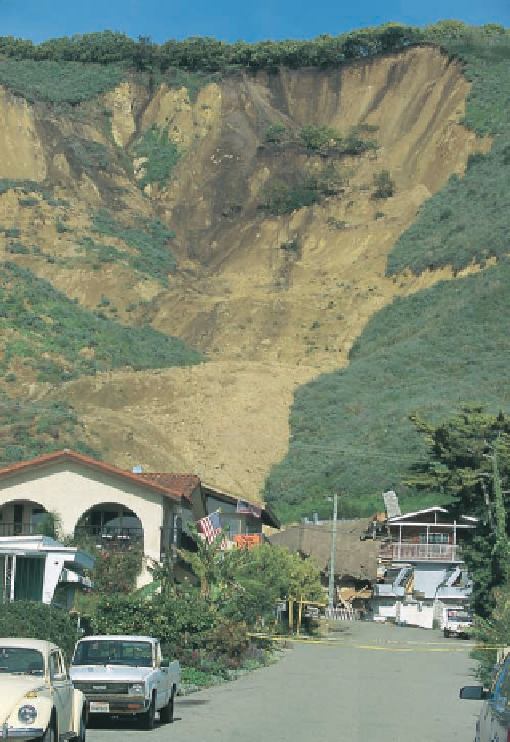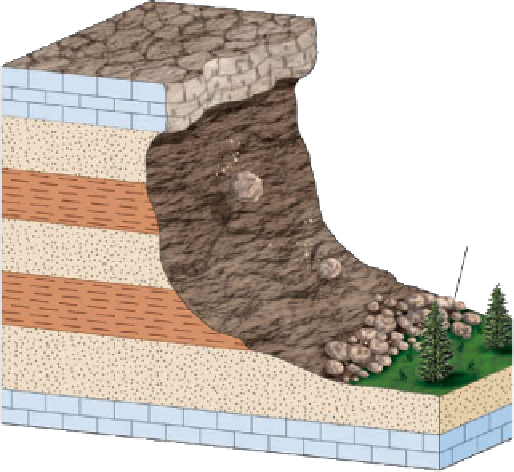Geology Reference
In-Depth Information
◗
Figure 11.7
Rockfalls
Talus
Rockfalls result from failure along cracks, fractures, or bedding
planes in the bedrock and are common features in areas of steep
cliffs.
a
◗
Figure 11.6
Landslide Triggered by Heavy Rains, La Conchita,
California Heavy winter rains caused this 200,000 m
3
landslide
in March, 1995 at La Conchita, California, 120 km northeast of
Los Angeles. Although no casualties occurred, nine homes were
destroyed or badly damaged. Another landslide 10 years later
occurred in the same area and under similar conditions, resulting
in 10 deaths.
Image not available due to copyright restrictions
Rockfalls result from failure along joints or bedding
planes in the bedrock and are commonly triggered by natural
or human undercutting of slopes, or by earthquakes. Many
rockfalls in cold climates are the result of frost wedging.
Chemical weathering caused by water percolating through
the fissures in carbonate rocks (limestone, dolostone, and
marble) is also responsible for many rockfalls.
Rockfalls range in size from small rocks falling from
a cliff to massive falls involving millions of cubic meters of
debris that destroy buildings, bury towns, and block high-
ways (Figure 11.7b). Rockfalls are a particularly common
hazard in mountainous areas where roads have been built
by blasting and grading through steep hillsides of bedrock.
Anyone who has ever driven through the Appalachians, the
Rocky Mountains, or the Sierra Nevada is familiar with the
“Watch for Falling Rocks” signs posted to warn drivers of
the danger. Slopes that are particularly susceptible to rockfalls
are sometimes covered with wire mesh in an effort to prevent
dislodged rocks from falling to the road below (
Another tactic is to put up wire mesh fences along the base
of the slope to catch or slow down bouncing or rolling rocks
(Figure 11.8b).
A
slide
involves movement of material along one or more
surfaces of failure. The type of material may be soil, rock,
or a combination of the two, and it may break apart during
movement or remain intact. A slide's rate of movement can
vary from extremely slow to very rapid (Table 11.2).
◗
Figure 11.8a).





Search WWH ::

Custom Search